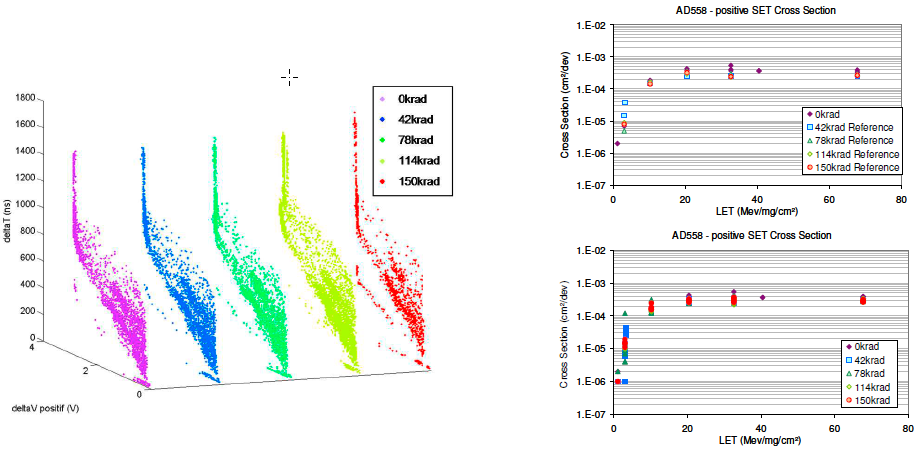Synergy effect SEE – TID on micro-electronic component
- Posted by doEEEt Media Group
- On February 14, 2020
- 0
Talk summary:
The radiation hardness of modern electronic devices regarding the space radiation environment is characterized according to two main aspects: cumulated effects and single event effects. The parts radiation qualification process includes Total Ionizing Dose (TID), Total Non-Ionizing Dose (TNID) and Single Event Effect (SEE) tests, usually performed independently.
The aim of this study is to evaluate the potential synergetic effects of TID on SEE sensitivity for 4 different types of electronic devices commonly used in space applications: – ADC AD9042 from Analog Device – DAC AD558 from Analog Device – Flash NAND MT29F4G08AAC from Micron – SRAM R1RW0416 from Renesas
Digital Hi-speed 65 nm Test Vehicle for TID radiation test Hirex Engineering
Component selection
Four different type of devices have been selected in order to have different functions, manufacturers and technologies.
Test plan principle
The plan principle is made by 3 step. This step are composed for TID and SEE test in the different instances. A standard test is used in the Step 0,with a Preliminary TID and SEE test.
The Step 1, Combined TID & SEE test and the Parametric tests are performed on all devices before 60Co irradiation.
For last, the Step 2, also combined TID & SEE test and the Parametric tests are performed on 10 irradiated devices. The SEE test has been tested on 5 devices among the 10 irradiated devices.
Results analysis
Synergy effect analysis
- Impact of Total Ionizing Dose on SEE sensitivity and error bars
- Impact of bias condition during TID irradiation on SEE sensitivity
- Impact of TID on SEE signature
Download or read the full report here
- Miniature RF Connectors - April 29, 2025
- Miniature RF Connectors for high-performance testing - April 24, 2025
- Space-Grade components available for immediate delivery - April 10, 2025



 External parameter continuous monitoring
External parameter continuous monitoring
0 comments on Synergy effect SEE – TID on micro-electronic component